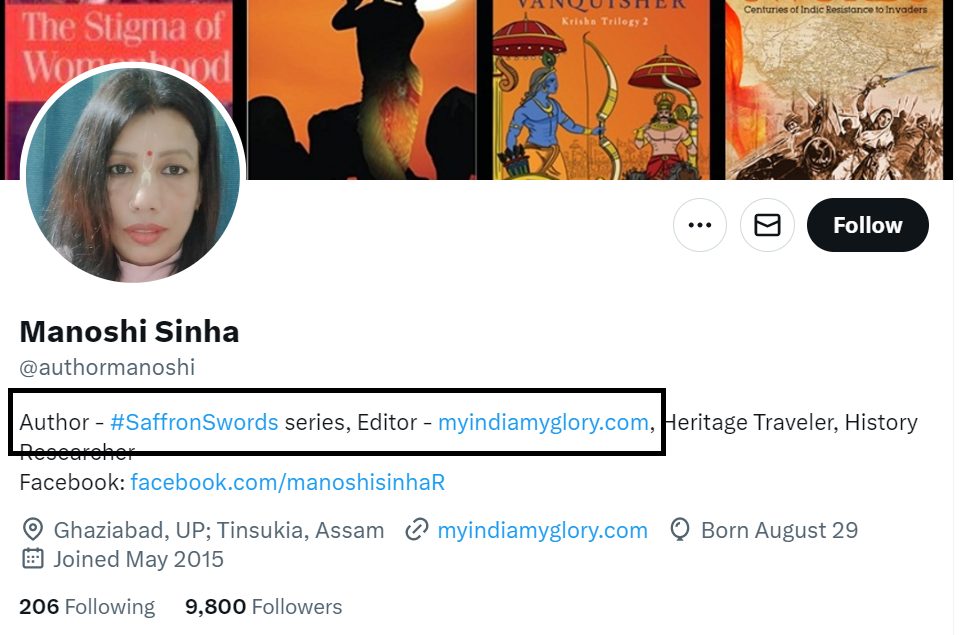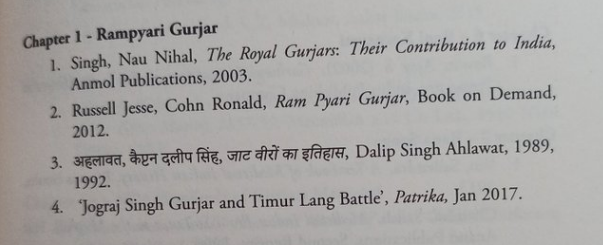Vice-President Jagdeep Dhankhar on March 11 unveiled a statue of Kotwal Dhan Singh Gurjar at a police training school in Meerut, Uttar Pradesh. During his speech at the programme, he said, among other things, that there were several instances of history not having any record of individuals who had valiantly fought against invaders.
The official handle of the Vice-President later tweeted a part of the speech. Here, the VP talks about three apparently forgotten brave-hearts of the past — 16-year-old Shivdevi Tomar who killed 17 Britishers near Meerut, Mahaviri Devi who was martyred along with 22 companions while fighting the British, and Rampyari Gurjar who, the VP says, fought with Timur by forming an army of 40,000. Their names are not found in our history, Dhankhar notes. (Archive)
16 वर्ष की शिवदेवी तोमर ने मेरठ के पास 17 अंग्रेजों को मौत के घाट उतार दिया
वंचित समुदाय से आने वाली वीरांगना महावीरी देवी अपनी 22 साथियों के साथ अंग्रेजों लड़ती हुई शहीद हुईं
रामप्यारी गुर्जर ने 40 हजार की सेना बना कर तैमूर से लोहा लिया
पर हमारे इतिहास में इनका नाम नहीं मिलता pic.twitter.com/I7tV9rr62w
— Vice President of India (@VPIndia) March 11, 2023
This is not the first time someone holding public office spoke about Rampyari Gurjar. We found that on January 28, 2023, Prime Minister Narendra Modi mentioned her while talking about the valor and patriotism of the Gurjar community at an event in Bhilwara, Rajasthan. According to the PMINDIA website, underlining the bravery and contribution of Gurjar women and paying tributes to Rampyari Gurjar, Modi said, “…It is the country’s misfortune that such countless fighters could not get the place they deserve in our history. But New India is rectifying these mistakes of the past decades.”
The PM’s speech can be heard here. The mention of Rampyari Gurjar occurs at the 21.58-minute mark onward.
Former Vice-President M Venkaiah Naidu, too, had talked about Rampyari Gurjar on April 11, 2020, while addressing a meeting of the Akhil Bhartiya Veer Gurjar Mahasabha. 8.10 minutes onward in the clip, he says Rampyari Gurjar defeated Timur Lang with an army of 40,000 soldiers. Without the mention of such warriors, Indian history is incomplete, the former VP says.
Vice President Venkaiya Naidu On Rampyari Gurjari, Raja Vijay Singh Kunjabahadurpur, Kalyan Singh Kalva Gurjar
Posted by Akhil Bhartiya Veer Gurjar Mahasabha on Saturday, 11 April 2020
There are several blogs, opinion pieces and YouTube videos that mention Rampyari Gurjari. Many of them cite a book by Manoshi Sinha Rawal called Saffron Swords (Garuda Prakashan, 2019) as their source. On the author’s Twitter profile, one can find her thanking Tarek Fatah for endorsing her book.
On Pages 26 and 27, she writes about the valor of Rampyari Gurjar against Timur’s warriors. One can read it below.
Dainik Jagran published an article on November 26, 2020 on Sinha’s book, titled ‘जिनकी नहीं सुनी कहानी थी, वह रानी रामप्यारी मर्दानी थीं’. It says, “20 साल की रामप्यारी गुर्जर ने मेरठ से लेकर हरिद्वार तक तैमूर को खदेड़ा। हरिद्वार में भागती तैमूर की सेना पर पंचायती योद्धाओं ने धावा बोल दिया था। तैमूर की सेना को मैदान छोड़कर भागना पड़ा।” (20-year-old Rampyari Gurjar chased Timur from Meerut to Haridwar…. Timur’s army had to leave the battlefield and run away)
We also found mention of the said conquest by Rampyari Gurjar over Timur on the website, www.myindiamyglory.com. This website, too, is run by Manoshi Sinha.

Who was Timur?
Amir Timur (also known as Timur Lang, Tamerlane, Tamburlaine, Aksak-Timur, etc) ascended the throne of Samarkand in 1369. He invaded India in September 1398 at the age of 62 after having led successful conquests in Persia, Afghanistan and Mesopotamia. The Delhi Sultanate was barely surviving after the death of Feroz Shah Tughlaq, and Timur occupied Delhi on December 18. The massacre of citizens and plunder of the city’s wealth lasted for several days. He left Delhi on January 1, 1399, on his return journey to Samarkand. He passed through Ferozabad and Meerut, which he stormed on January 19. He then proceeded via Kangra and Jammu, killing civilians en masse at every stop, and left this country in mid-March, 1399. Delhi and the north-western provinces of India, which were completely razed by the marauder, took years to regain any kind of stability — be it social, economic or political. Timur died in 1405 at Otrar, Kazakhstan, on his way to Peking, China, after a brief illness caused by a bitter cold. The circumstances of his death are described in detail by his biographer Justin Marozzi in Tamerlane: Sword of Islam, Conqueror of the world (Cambridge, 2006).
Claims on Rampyari Gurjar Absurd, Say Historians
Alt News spoke to a number of historians to find out the veracity of the claim that Rampyari Gurjar/Gurjari defeated Timur with an army of 40,000 soldiers.
Historian and former professor of Jawaharlal Nehru University Harbans Mukhia said a woman fighting against an invader like Timur with an army of 40,000 soldiers and defeating him — both of these were absurd ideas. “Even the state could not possibly ramp up such a huge force. It disintegrated after Feroz Shah Tughlaq’s death in 1388. And whatever we know tells us that Timur completely crushed whatever was left of the Tughlaq rule in 1398. There is no record of any ruler giving Timur any kind of fight or resistance.”
“There are two ways of looking at the past. One is by historians, based on evidence and authenticity. The other is the past as different from recorded history… the past viewed in popular perception… heroes, heroines, events… these are not bound by norms and not subject to any kind of evidence. Characters like Rampyari Gurjar are part of that discourse. Such myths about bravery are part of every culture. But there is historicity to them,” Mukhia added.
We consulted the book The Sultanate of Delhi (1206-1526 AD) by Ashirbadi Lal Srivastava, who is considered a Right Wing historian, and who did his D. Litt under Jadunath Sarkar, another nationalist historian. Incidentally, it is Srivastava, who, in his biography of Akbar, described Rana Pratap for the first time as a great heroic figure. Multiple Right Wing politicians and sympathizers have since lamented why Rana Pratap is not accorded the same status as Akbar in Indian history.
Srivastava’s book makes no mention of any resistance faced by Timur. It says he engaged with two Hindu armies and defeated them. There is no mention of any army giving the invader the slightest of trouble, let alone wounding him and forcing him to flee or defeating him. One can read the relevant part of the book here:
Alt News spoke to historian Heramb Chaturvedi, retired professor of Allahabad University, who called the claim ‘absolutely absurd’. He took us to the Bharatiya Vidya Bhavan project of writing a Hindu history of India. “In the Indian History Congress of 1935 held in Poona (Pune), it was decided that the nationalist history of India should be written in a systematic way. The project was taken up by the Bharatiya Vidya Bhavan under the leadership of K M Munsi and R C Majumdar. The result is the 11-volume work ‘History and Culture of the Indian People‘. Volume 6 discusses the Delhi Sultanate and Timur’s invasion. Had there been any so-called Hindu resistance to the conquest, this book would have recorded it. But there is no mention of any Rampyari Gurjar or any local chieftain putting up even a semblance of a fight,” Chaturvedi told Alt News.
One can read the relevant chapter here:
Alt News then contacted retired principal and associate professor of medieval history at Delhi’s Motilal Nehru College Surajbhan Bhardwaj. Bhardwaj has written and edited several volumes on the social and political history of Rajasthan. “This story of her fight against Timur must be a recent creation as part of the trend of each community creating its own myth. In all my years of research into medieval history and folklores of the region, I have never come across any evidence to support the claims made around her,” he said.
Dubious Sources of Manoshi Sinha’s Book
Author Manoshi Sinha, whose work ‘Saffron Swords’ seems to be the source of the pseudo-history around Rampyari Gurjar, has cited four books as her source for the chapter on Rampyari Gurjar. Neither of these is a primary and well-known historical work.

The second entry, which stands out because of the names of the foreign authors, is fake. In place of the publisher’s name, the citation says ‘Book on Demand’. When we searched online, we found that the ‘book’ is published by ‘Bookvika Publishing’. A stamp on the cover of the book says ‘High quality content by Wikipedia articles’. At present, Wikipedia does not have a page on Rampyari Gurjar.

When we searched other titles by Bookvika, we found that all their books are by the same authors — Jesse Russell and Ronald Cohn, and every book has the same stamp: ‘High quality content by Wikipedia articles’.
This basically suggests that these ‘books’ are compilations of Wikipedia articles and these authors are non-existent. Any author citing such a book as her source immediately raises questions about the seriousness of her pursuit.
Digging further, we found that the Wikipedia page on Rampyari Gurjar was deleted in 2015. This Wikipedia Noticeboard archive contains discussions among administrators regarding the reason for the deletion of the article. One of them writes: “The article on Ram Pyari Gurjar claims that she was a woman commander who fought against Timur. However, the only source cited in the article is The royal Gurjars by Nau Nihal Singh. The book seems less of a reliable scholarly work and more of an attempt at ethnic glorification. I cannot find any other sources — Google just throws up Wikipedia mirrors or articles based on Wikipedia.”
Another of them notes, “If any of this were true (or at least historically attested), scholarly works wouldn’t have simply forgotten to mention it.”
“I think all these articles date from that 2009 to early 2010 time frame when there was a Gurjar discussion board egging people to come on here and edit. One of the editors from here had even posted how to stay under the radar and do it (including which admins to keep away from!),” adds another administrator.
Eventually, one of them says on July 29, 2015, that the article has been deleted.
This book by Nau Nihal Singh, called The Royal Gurjars is the first source cited by Manoshi Sinha. As one can see, its credibility has been questioned by several persons.
The third source, ‘Jat Veeron Ki Itihas’ by Dalip Singh Ahlawat was published by the author himself. In Chapter IV, he mentions the name of Rampyari Gurjar once as one of the women chosen as a commander in the Army that fought against Timur. There is no detail other than this. And on top of that, Ahlawat’s book, written with the explicitly stated purpose of the glorification of Jats, is not a primary history book by any stretch of imagination.
The fourth source for Manoshi Sinha is an article in the Hindi daily newspaper Patrika from January 2017. The citation does not mention the author’s name or the exact date of the article.
Hindutva Politics Behind Such ‘Inventions’?
A couple of days after the tweet by the VP’s official handle, journalist and author Manimugdha Sharma pointed out that the said conquest ‘never happened’.
India’s Vice President peddling WhatsApp balderdash created by the Hindutva School of Historical Forgery. Sir, the reason why history books don’t tell you about ‘Gurjari Rampyari Chauhan’ defeating Amir Temur Gurkan with her 40,000 women warriors is because it NEVER happened. https://t.co/eCCj9nXIvC
— Manimugdha Sharma (@quizzicalguy) March 13, 2023
Speaking to Alt News, Sharma described the sources of Manoshi Sinha’s work as ‘laughable’. “The story of Rampyari Gurjar defeating a non-Hindu conqueror is an example of fictitious history created with distinct political motives. These have become popular after they were compiled in the 2019 book, Saffron Swords, which then resulted in the creation of social media forwards and video shorts. The bibliography mentions dubious entries, while the main text is completely imaginary. There isn’t a shred of evidence to support the theory that the Muslim conqueror was defeated by a woman warrior and retreated in shame, barely clinging to life, as the book claims,” he said.
We found two blogs (here and here) that describe the so-called history of Rampyari Gurjar as a ‘hoax’ and ‘fiction’, and call into question the reliability of the books mentioned above. We also found a Twitter thread that questions the sources of Manoshi Sinha’s book.
On March 18, Scroll published an article underlining the difficulties in accepting Rampyari Gurjar’s fight against Timur as history. The story attributed the birth of such narratives to the BJP’s bid to “invent(ing) history for a new Hindutva caste politics”.
To sum up, there is no credible source to back the claim that a woman called Rampyari Gurjar really existed and she fought against Timur with an army of 40,000 soldiers and defeated them. Not even the Right Wing historians claim that Timur faced any considerable resistance when he plundered north India. The book by Manoshi Sinha Rawal that seemingly gives currency to the narrative built around Rampyari Gurjar is based on dubious, unreliable and even ‘non-existent’ books.
Independent journalism that speaks truth to power and is free of corporate and political control is possible only when people start contributing towards the same. Please consider donating towards this endeavour to fight fake news and misinformation.




